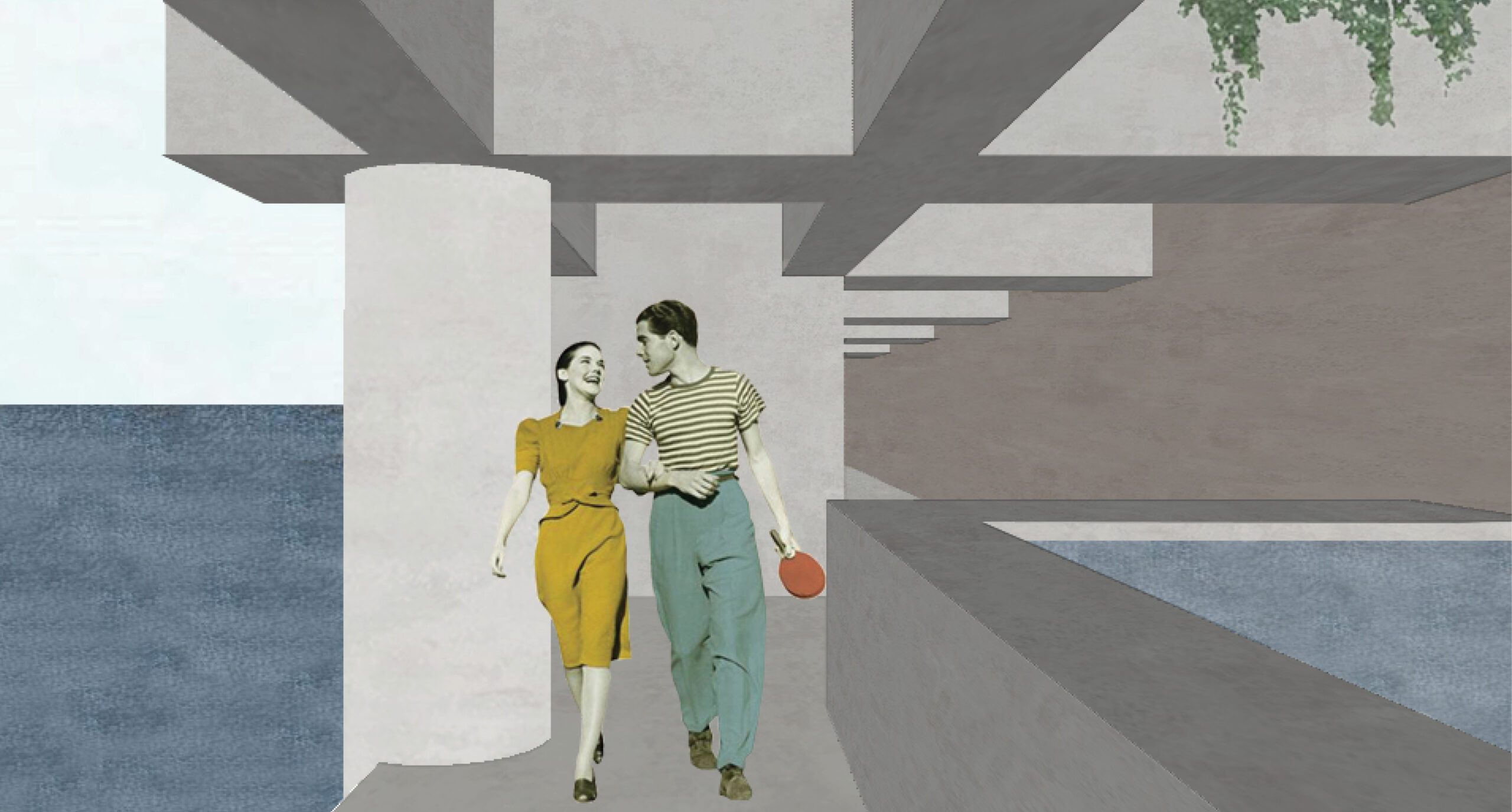This project explores the Material Culture of Carlisle Pier in Dun Laoghaire, and how shadows of the past can inform design. Historically significant as an emigration gateway, a port for people rather than cargo, this project proposes to reuse the now disused pier as a public space which reclaims access to and interaction with the tides. Traces of each layer of development, since the original 1850s granite pier, are excavated and exposed.
Optimising the gaps between the topographical, historical and tidal layers a surface and a depth is created. The surface, a garden and walkway in the supralittoral zone, reveals the ribbed structure of the 1960’s concrete overlay. The old railway cutting is excavated to create an in-between sheltered microclimate. The depth, which occupies the intertidal zone, is a sequence of spaces inhabiting the space between the original granite pier and the 1960’s concrete piles. The changing atmosphere of these tidal chambers is connected to the varying relationships to the sea, views, light and reflectivity of the water. The tidal underworld washes away at high tide.
Pozzolanic concrete is proposed to construct this new layer of recreational infrastructure to Dun Laoghaire’s Victorian seafront. This ancient Roman building material, which strengthens when exposed to salty seawater, is reformulated to reuse local waste by-products. Dredged material from Dublin Port and fly ash from the Poolbeg incinerator are proposed as alternatives to traditional aggregate and volcanic ash.
